
Advertisement

![]() by Nasaira » Tue Sep 17, 2019 10:44 pm
by Nasaira » Tue Sep 17, 2019 10:44 pm

![]() by The Imperial Warglorian Empire » Tue Oct 01, 2019 12:16 am
by The Imperial Warglorian Empire » Tue Oct 01, 2019 12:16 am
Rannoria wrote:Everybody gangsta

![]() by Aclus » Thu Oct 03, 2019 4:08 pm
by Aclus » Thu Oct 03, 2019 4:08 pm

![]() by Yindrai » Tue Oct 08, 2019 1:49 pm
by Yindrai » Tue Oct 08, 2019 1:49 pm


 "If yet your blood does not rage, then it is merely water that flows in your veins. For what is the flush of youth, if not service to the motherland?" - Azad
"If yet your blood does not rage, then it is merely water that flows in your veins. For what is the flush of youth, if not service to the motherland?" - Azad
For too long have the Yindraini people been oppressed, treated like slaves in our own country.
We were a proud people once, a shining jewel of a kingdom, the richest and most glorious realm Indianum had ever seen. But our hubris was our downfall.
We became weak and complacent. By courting foreigners who wanted only to subjugate us, we led ourselves to our own enslavement.
The Aclusians who govern us now want only to extract our wealth. They care nothing for our people. They send us off to fight their foreign wars and we receive nothing in return. Few people remain who remember how it feels to breathe free.
The people of Yindrai have been forced to suffer unimaginable indignities; but it unhelpful to simply dwell on the injustices of the past, and remain complacent in the present.
The time is now. Too long have we waited for salvation from abroad. It is time for the Yindraini people to take back what is ours, by any means necessary.
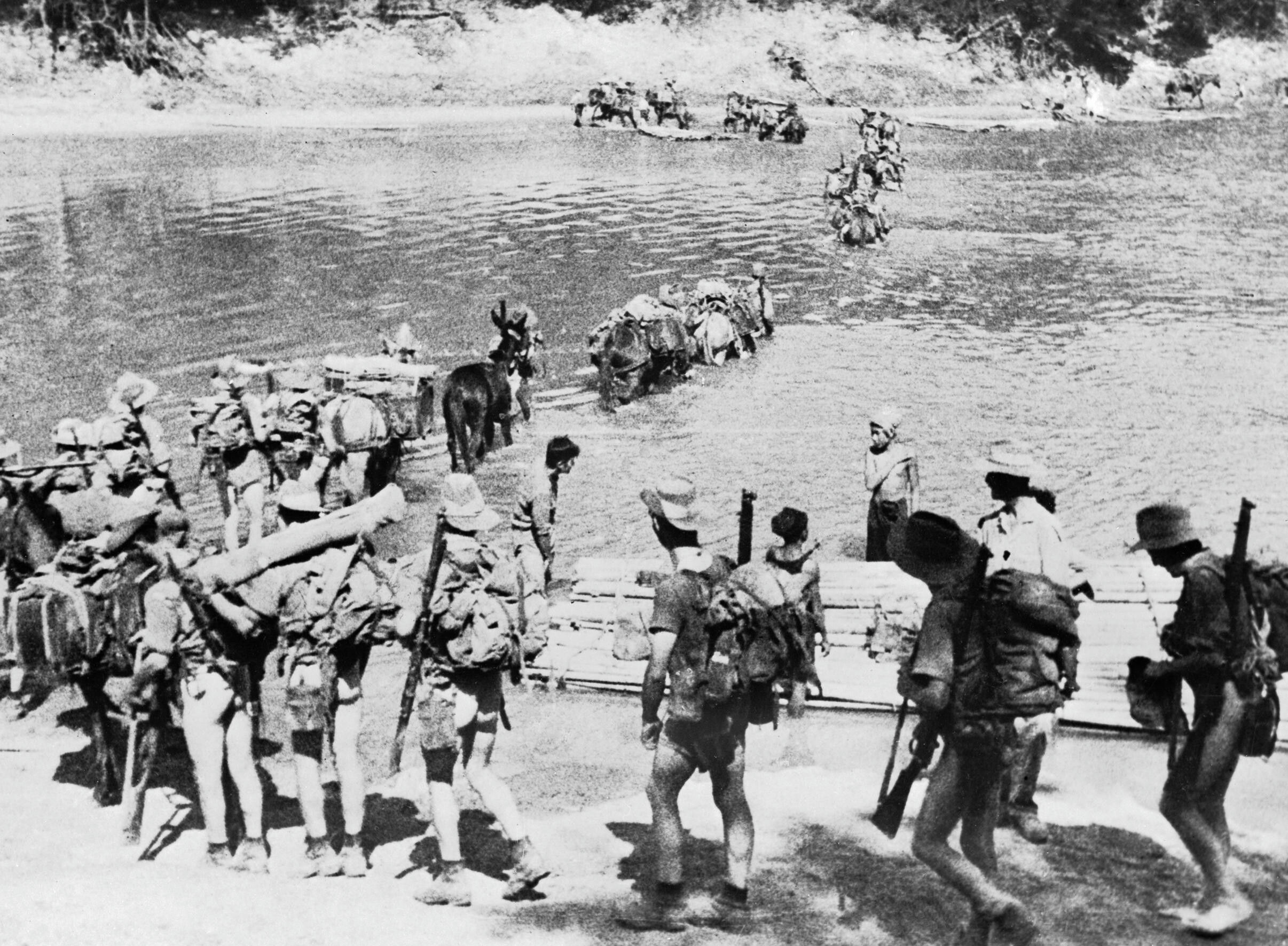



![]() by Remnants of Exilvania » Sat Oct 26, 2019 1:09 pm
by Remnants of Exilvania » Sat Oct 26, 2019 1:09 pm

![]() by Guuj Xaat Kil » Sun Oct 27, 2019 12:56 am
by Guuj Xaat Kil » Sun Oct 27, 2019 12:56 am

![]() by Remnants of Exilvania » Sun Oct 27, 2019 6:47 am
by Remnants of Exilvania » Sun Oct 27, 2019 6:47 am
Guuj Xaat Kil wrote:Remnants of Exilvania wrote:Because googling 1912-1990 every time is so much more inconvenient than just opening my "View your posts" tab on NS.
Thank you. Hello to you too.
The OOC is a bit dead, so it would be much appreciated if you go on the discord.
Although if you are unable to do so, that’s fine, I always wanted to see this RP get a 500 page IC like the old times.

![]() by Guuj Xaat Kil » Sun Oct 27, 2019 8:52 am
by Guuj Xaat Kil » Sun Oct 27, 2019 8:52 am
Remnants of Exilvania wrote:Guuj Xaat Kil wrote:The OOC is a bit dead, so it would be much appreciated if you go on the discord.
Although if you are unable to do so, that’s fine, I always wanted to see this RP get a 500 page IC like the old times.
I'm sure you mean OOC.
And yeah...those good old days of the long and active OOCs.

![]() by Remnants of Exilvania » Fri Nov 01, 2019 6:40 am
by Remnants of Exilvania » Fri Nov 01, 2019 6:40 am

![]() by The Traansval » Sun Nov 10, 2019 11:22 am
by The Traansval » Sun Nov 10, 2019 11:22 am

[*]Die Volkskommissaris van Staat, of State, is a purely advisory position, whose job it is to advise the Voorsitter and the Raad on matters of State, but has no actual power or administrative duties besides being able to chair meetings of the Raad if the Voorsitter is indisposed.
[*]Die Volkskommissarisskap van de Landmacht, for the Army, is responsible for the upkeep and administration of the Landmacht, the Army.
[*]Die Volkskommissarisskap vir Land is responsible for the administration of land owned by the Federal government, most of which was land confiscated during the War of Independence from landed elites, with almost 500 million acres under Federal ownership, although a good chunk is accounted for by the Desert. This land is then leased out to local farmers. The VK vir Land also is responsible for the administration of nature preserves, Federal parks, and just generally any "Land" owned by the Federal government.
[*]Die Volkskommissarisskap vir Landbou, for Agriculture, works very closely with the VK vir Land in setting up farmers on Federal land and establishing their leases, along with working with independent farmers working land at the Kommune level and with the Farmer's Unions on improving agricultural output and production through cooperative research, and finally ensures the safety of agriculturally produced products through testing.
[*]Die Volkskommissarisskap vir die Marine, for the Navy, is responsible for the upkeep and administration of the Federale Marine, the Navy.
[*]Die Volkskommissarisskap vir Handel en Nywerheid, for Trade and Industry, is the VK responsible for the operation of National Industries such as War Production Industries, and is the VK responsible for working with domestic businesses to promote production, and is entrusted with the task to "to foster, promote, and develop the foreign and domestic commerce".
[*]Die Volkskommissarisskap vir Onderwys en kultuur, for Education and Culture, is responsible for the administration of public education institutions including primary and secondary schools, technical schools, colleges and universities, and cultural and historical education centers such as museums and historical sites.
[*]Die Volkskommissarisskap vir Buitelandse Sake, for Foreign Affairs, is responsible for the undertaking of foreign diplomacy through the Buitelandsediens, Foreign Service, and its diplomats, envoys, consuls, and various other diplomatic personnel that handle foreign diplomacy and, if needed, will advise the President and Kongres on pressing international matters. The VK also operates the Geheime intelligensiediens, the Secret Intelligence Service, or G.I.D. which is responsible for foreign intelligence gathering, surveillance, and covert operations in espionage.
[*]Die Volkskommissarisskap vir Binnelandse Sake, for the Interior, is responsible for the interior security and stability of the Traansval, a duty which is done through multiple departments including the armed Grenswacht, Border Guard, responsible for guarding and patrolling the land border, the Kuswacht, Coast Guard, responsible for guarding and patrolling the coastal regions and inland rivers/lakes, and the Federale Polisie, Federal Police, responsible for enforcing Federal law and providing security for Federal lands, Federal buildings, transportation security on railroads, at ports, and at airports, and to assist local police when requested. The Federale Polisie also protect the President, members of the government, and members of Kongres. The VK also operates the Immigrasie Buro, Immigration Bureau, which is responsible for administering foreign immigration and the process of citizenship.
[*]Die Volkskommissarisskap vir Geregtigheid, for Justice, is responsible for providing legal advice to the President and Kongres, representing the Federation in the prosecution of violations of Federal law, and representing the Federation in civil suits. It is also responsible for investigations of corruption and political offenses in the Federal Government, Kongres, the State, or in the Unions, through the Volksanwalt’s office.
[*]Die Volkskommissarisskap van Arbeid, for Labor, is responsible for working with the Unions in formulating labor policy, advising the Vorsitter and Kongres on labor standards, and directing the Federale Arbeidskorps, the Federal Labor Corp, which is responsible for construction on Federal projects.
[*]Die Volkskommissarisskap vir Nasionaliteite, for Nationalities, is responsible for the representation of the multiple native and foreign nationalities within the Federation, including the administration of the Homelands, a series of "Reserves" where native tribes are able to autonomously rule themselves.
[*]Die Volkskommissarisskap vir Poste en Telegrawe, for Post and Telegraphs, is responsible for the operation and administration of the nations postal service and telegraph communications.
[*]Die Volkskommissarisskap vir Spoorweë, for Railroads, is responsible for the operation and upkeep of the Traansval's railroads, rail stations, and trains.
[*]Die Volkskommissarisskap van die Tesourie, for the Treasury, is responsible for government spending, storing and securing government revenue, and overseeing the Federational Reserve, a system of regional banks which lend money to local Credit Unions as a way to direct the financial system.
[*]Die Volkskommissarisskap vir Energie, for energy, is responsible for the operation of energy producing plants and the means to move and transport the power through power lines.
[*]Die Volkskommissarisskap vir Hulpbronne, for resources, is responsible for the operation of nationalized industries dealing with the extraction of resources such as coal, iron, oil, etc. and for their distribution to native industries and their sale to foreign buyers.
[*]Die Volkskommissarisskap vir Gesondheidsdienste, for Health Services, is responsible for ensuring the health of the nations population through its role as a single payer healthcare service and the operation of the Federale Mediese Korps, Federal Medical Corp, a uniformed service of medical professionals whose job it is to ensure the public health through studying the prevention and control of diseases, and stopping epidemics when they come.
[*]Die Volkskommissarisskap vir Behuising en Stedelike Ontwikkeling, for Housing and Urban Development, is responsible for ensuring worker housing and the planning and development of cities through working with Staat and Kommune governments and providing Federal funding and work through the FAK for the projects.
[*]Die Volkskommissarisskap vir Maatskaplike Welsyn, for Social Welfare, is responsible for the operation and distribution of social welfare and government programs to help the poor, including a social dividend, social insurance program, old age pension, housing support, low rate loans, etc.

![]() by The Traansval » Sun Nov 10, 2019 11:23 am
by The Traansval » Sun Nov 10, 2019 11:23 am
Composition and Organization of the Organic components of an Infanteriedivisie
Infanterie Divisie [19,770 service men]
>Spesiale Troepe Bataljon [900 men] (Signals, Legerwacht MPs, Political Officers, Division HQ, Ordnance, etc.)
>Ingenieur Bataljon [650 men]
>Kavallerie Verkenningskader [220 men]
>Mediese Bataljon [500 men]
>Three Infanterie Brigades [5,050 men each]
>>Regimental HQ [130 men]
>>Three Bataljons [1,650 men each]
>>>Bataljonne HQ [80 men]
>>>Four Infanterieonderneming [320 men each]
>>>>Onderneming HQ [75 men]
>>>>Four Afdeling [50 men each]
>>>>>Three Groep [12 men each]
>>>>>>Four Fireteams [3 men each] (One Rifleman, One Submachine Gunner, One Rifleman) (First Fireteam contains the Groep leader, sergeant, and assistant)
>>>>>Masjiengeweer groep [12 men]
>>>>>>Four Fireteams [3 men each] (One Rifleman, One Lewis Gunner, One Assistant)
>>>>>Mortierafdeling [45 men] (3 x 8.2cm Mortars)
>>>Masjiengeweeronderneming [190 men] (Twelve 7.9mm Maxim Guns)
>>>Ligte Infanterie Kanononderneming [40 men] (Four 7.62cm Infanterie Kanons)
>>>Panster Kanononderneming [70 men] (Four 45mm Pansterjagter Kanons)
>>>Mediese Losmaak [68 men]
>Artillerie Regiment [2,345 men]
>>Regimental HQ [145]
>>Veldkanon Bataljon [550 men]
>>>HQ + Supply [135 men]
>>>Two Ligte Batterye [140 men each] (Four 7.5cm Veldkanons and Two 6.5mm Lewis Guns each)
>>>Swaar Batterye [140 men] (Four 10.5cm Veldkannons and two 6.5mm Lewis Guns)
>>Two Howitzer Bataljons [550 men each]
>>>HQ + Supply [130 men]
>>>Three Batterye [140 men each] (Four 12.2cm Veldhowitzer and Two 6.5mm Lewis Guns each)
>>Swaar Howitzer Bataljon [550 men]
>>>HQ + Supply [130 men]
>>>Three Batterye [140 men each] (Four 15.2cm Krupp Howitzer and Two 6.5mm Lewis Guns each)
Composition and Organization of the Organic components of a Kavalleriedivisie
Kavalleriedivisie [12,364 men]
>Divisie HQ and Spesiale Troepe [684 men]
>Ingeniuerbataljon [338 men]
>Kavallerie Verkenningskader [220 men]
>Two Kavalleriebrigade [5,010 men each]
>>Brigade HQ [120 men]
>>Ligte Infanterie Kanononderneming [40 men] (Four 7.62cm Infanterie Kanons)
>>Panster Kanononderneming [70 men] (Four 45mm Pansterjagter Kanons)
>>Two Kavallerieregiments [2,388 men each]
>>>Regiment HQ [242 men]
>>>Three Kavallerie Eskaders [715 men each]
>>>>Eskader HQ [80 men]
>>>>Four Kavallerietroepe [275 men each]
>>>>>Troepe HQ [75 men]
>>>>>Four Afdeling [50 men each]
>>>>>>Three Groep [12 men each]
>>>>>>>Four Fireteams [3 men each] (One Rifleman, One Submachine Gunner, One Rifleman) (First Fireteam contains the Groep leader, sergeant, and assistant)
>>>>>>Masjiengeweer groep [12 men]
>>>>>>>Four Fireteams [3 men each] (One Rifleman, One Lewis Gunner, One Assistant)
>>>>Mortierafdeling [90 men] (6 x 8.2cm Mortars)
>>>>Masjiengeweeronderneming [190 men] (Twelve 7.9mm Maxim Guns)
>Two Veldkanon Bataljon [550 men]
>>>HQ + Supply [135 men]
>>>Two Ligte Batterye [140 men each] (Four 7.5cm Veldkanons and Two 6.5mm Lewis Guns each)
>>>Swaar Batterye [140 men] (Four 10.5cm Veldkannons and two 6.5mm Lewis Guns)
Composition and Organization of the Organic components of a Pansterdivisie
Pansterdivisie [11,054 men]
>Brigade HQ [440 men]
>Panster Seineonderneming [230 men]
>Panstertrain [400 men]
>Panster Ingeniuerbataljon [650 men]
>Panster Onderhoudsbataljon [500 men]
>Kavallerie Verkenningskader [220 men] (Fifty-Four Pansterwagen)
>Three Pansterbataljon [720 men each]
>>Bataljon HQ [120 men]
>>Three Kanon-Pansteronderneming [150 men each]
>>>Onderneming HQ [25 men] (Two tanks and one Pansterwagen)
>>>Three Pansterafdeling [45 men each] (Five Tanks each)
>>Ligte-Pansteronderneming [150 men]
>>>Onderneming HQ [25 men] (Two tanks and one Pansterwagon)
>>>Three Pansterafdeling [45 men each] (Five tanks each)
>Three Panster Infanteriebataljon [1,648 men each]
>>>Bataljonne HQ [80 men]
>>>Four Infanterieonderneming [320 men each]
>>>>Onderneming HQ [75 men]
>>>>Four Afdeling [50 men each]
>>>>>Three Groep [12 men each]
>>>>>>Four Fireteams [3 men each] (One Rifleman, One Submachine Gunner, One Rifleman) (First Fireteam contains the Groep leader, sergeant, and assistant)
>>>>>Masjiengeweer groep [12 men]
>>>>>>Mortierafdeling [45 men] (3 x 8.2cm Mortars)
>>>Masjiengeweeronderneming [190 men] (Twelve 7.9mm Maxim Guns)
>>>Ligte Infanterie Kanononderneming [40 men] (Four 7.62cm Infanterie Kanons)
>>>Panster Kanononderneming [70 men] (Four 45mm Pansterjagter Kanons)
>>>Mediese Losmaak [68 men]
>Three Panster Artilleriebataljon [550 men each]
>>Veldkanon Bataljon [550 men]
>>>HQ + Supply [135 men]
>>>Two Ligte Batterye [140 men each] (Four 7.5cm Veldkanons and Two 6.5mm Lewis Guns each)
>>>Swaar Batterye [140 men] (Four 10.5cm Veldkannons and two 6.5mm Lewis Guns)
>>Two Howitzer Bataljons [550 men each]
>>>HQ + Supply [130 men]
>>>Three Batterye [140 men each] (Four 12.2cm Veldhowitzer and Two 6.5mm Lewis Guns each)
Artillery of the Federale Landmacht's Artilleriekorp
7.5cm Veldkannon
10.5cm Veldkannon
7.62cm Infanterie Kannon
12.2cm Veldhowitzer
15.2cm Veldhowitzer
20.3cm Howitzer
7.5cm Mountain Kannon
4.5cm Pansterjagter Kannon
4.5cm Luchtkannon
12cm Mortar
8.2cm Mortar
13.2mm Machine Gun
Vehicles of the Federale Landmacht
The Ligte-Panster Model 2, or LP-2, was designed by the Kaapstad Arsenal under the modernization program undertaken by the Landmacht. The purpose of the L2 is primarily to serve as an infantry support vehicle and fast breakthrough tank. Its primary armament is a 12.7x99mm M22 maxim gun in a rotating front turret, with two M32 machine guns as secondary armaments, and up to 12.7mm of armor. Its top speed is roughly 70 km/h. The LP-2 is slowly being phased out for the new KP-1, with plans to displace the LP-2 by 1940.
The Kannon-Panster Model 4, or KP-1, was designed by the Pretoria Arsenal to be a tank capable of keeping up a fast speed while also having enough armor for protection and a powerful cannon to destroy enemy vehicles or fortifications. Its primary armament is a 37mm anti-tank gun with two M32 machine guns as secondary armaments, and roughly 13-15mm of armor all around. Its top speed is roughly 40 km/h.
The “Pretorian Kanon”, officially the Selfaangedrewe 75mm Kanon, Self Propelled 75mm Gun, is an adaptation of the M4’s chassis into an open aired vehicle mounted with the Boer 7.5cm Veldkannon. Its purpose is to provide fire support and also to target and destroy enemy tanks. A variant of the Pretorian Gun is the Bloemfontein Kanon, a conversion invented by the Bloemfontein Arsenal to mount the 12.2cm Howitzer on the same mechanism to provide mobile indirect fire support. Both are being used to slowly supplant regular guns towed by tractors in the Pansterkorps.
The Model 17 Pansterwagen is an armored car based somewhat on the Model 7. It sports armor capable of defending against small arms and machine gun fire, and a rotating top turret with a mounted 13.2mm machine gun. It has a top speed of 88km/h and very good off road performance. The Pansterwagen is usually assigned to integral recon units with the Kavallerie or Pansterkorps, and is also included in regular armored units.
The M8 Verkennermotor or “Scout Car” is a lightly armored car capable of carrying four passengers and which is armed usually with two light Lewis machine guns as defense. The primary purpose of the M8 is to serve in recon units, with its topspeed of 80km/h making it a fast and nimble car good for recon purposes.
The Model 11 Vragmotor is the military designation for the civilian Hudson truck. It's mostly used for the transportation of supplies and materials.
The Model 7 Vragmotor “Trado” is a specially designed truck by Kairo Arsenal for military uses. Its sturdy design and powerful engine allows it to be used in multiple utility roles, ranging from Ambulances to Artillery towers.
The Model 8 Motor, a military production of the civilian Marmon Cooperative’s successful LD series of cars, is a utility, reconnaissance, and staff car rolled in one. A capable off road vehicle, and tough as nails, its primarily used to transport personnel or for utility jobs light enough for it, such as pulling field guns or carrying crates on its back.
List of operational aircraft of the Luchtkorp
Pursuit Aircraft
Model 33A - The newest fighter aircraft in use, the M33A was put into production in 1935 and is seeing limited deployment as the Luchtkorp seeks to replace the M16A with the new monoplane. Current 232 are in service. It has a max speed of 250 km/h and a cruising speed of 232 km/h, with a range of 500km and is armed with four maxim machine guns mounted on the wings.
Model 2A - Fokker design from the 1920s, the Model 2A is a pursuit aircraft which was originally put into production as a wartime need to counter Aclusian airpower. The Luchtkorps has phased out its use and currently only uses it for ceremonial flights, training, or with Rodewacht units, with approximately 420 of them are in inventory. It has a max speed of 220km/h and a cruising speed of 188km/h, with a range of 471km and is armed with two maxim machine guns mounted on the fuselage. Production ceased around 1928.
Model 16A - Fokkers first design to be put into production exclusively with a State Arsenal, currently the most widely used fighters, currently being phased out with the M33A. Currently there are 5,450 in service. It has a max speed of 320km/h, a range of 640 km, and an armament of two maxim machine guns mounted on the fuselage.
Bomber Aircraft
Model 22B - Introduced in 1935, just entering production planned to replace the M12B by 1938. So far 23 are in service. Capable of a max speed of 343 km/h and has a cruising speed of 311 km/h, a range of 2,000 km, and is armed with two maxim guns and capable of carrying up to 1,025 kg in bombs.
Model 17B - A recent design entering service this year, 1935, it is the first purpose built ground attack aircraft in the Luchtkorp, and is planned to replace the M5B by 1938. Capable of a max speed of 332 km/h and has a cruising speed of 274 km/h, a range of 1,046 km, and is armed with two maxim machine guns with a rear mounted lewis gun and an internal bombbay with up to 544 kg in armament.
Model 5B - Fokker design from the 1920’s, production began after the Aclusian peace and it has stayed in service ever since. Originally designed as a recon aircraft, the Model 5B quickly became the main bomber aircraft of the Boer forces, with Fokker production quickly making it so that bombs could be attached under the wings. Capable of a max speed of 250km/h and has a cruising speed of 180km/h, a range of 1,000 kmh, and is armed with two maxim machine guns and is capable of mounting 200kg of bombs under the wings.
Model 12B - Fokker design, an adaptation of his previously successful commercial airliner then turned military transport plane, now turned bomber. 384 are in service. It has a top speed of 230km/h and a cruising speed of 190km/h, a ceiling of 8,850km, and an armament of two maxim machine guns, three lewis machine guns, and a maximum payload of 870kg of bombs.
Recon Aircraft
Model 7V - Fokker design, the first created after the Federation of Labor and the Fokker Company came to an agreement during closed door meetings in Kaapstad in 1928. The Model 7V was built from the ground up for recon, 1,250 of the planes are currently in service.
Composition and Organization of the Organic components of a Mariniersdivisie
Marinier Divisie [26,480 service men]
>Spesiale Troepe Bataljon [900 men] (Signals, Legerwacht MPs, Political Officers, Division HQ, Ordnance, etc.)
>Ingenieur Bataljon [650 men]
>Marinier Pansterskader [200 men]
>Mediese Bataljon [500 men]
>Four Marinier Brigades [6,730 men each]
>>Regimental HQ [130 men]
>>Four Bataljons [1,650 men each]
>>>Bataljonne HQ [80 men]
>>>Four Infanterieonderneming [320 men each]
>>>>Onderneming HQ [75 men]
>>>>Four Afdeling [50 men each]
>>>>>Three Groep [12 men each]
>>>>>>Four Fireteams [3 men each] (One Rifleman, One Submachine Gunner, One Rifleman) (First Fireteam contains the Groep leader, sergeant, and assistant)
>>>>>Masjiengeweer Groep [12 men]
>>>>>>Four Fireteams [3 men each] (One Rifleman, One Lewis Gunner, One Assistant Gunner)
>>>>>Mortierafdeling [45 men] (3 x 8.1cm Stokes-Brandt Mortars)
>>>Masjiengeweeronderneming [190 men] (Twelve 7.9mm Maxim Guns)
>>>Ligte Infanterie Kanononderneming [40 men] (Four 7.62cm Infanterie Kanons)
>>>Panster Kanononderneming [70 men] (Four 37mm Panster Kanons)
>>>Mediese Losmaak [68 men]
>Artillerie Regiment [2,345 men]
>>Regimental HQ [145]
>>Two Ligveld Kanon Bataljon [550 men each]
>>>HQ + Supply [135 men]
>>>Three Batterye [140 men each] (Four 7.5cm Veldkanons and Two 6.5mm Lewis Guns each)
>>Two Howitzer Bataljons [550 men each]
>>>HQ + Supply [130 men]
>>>Three Batterye [140 men each] (Four 10.5cm Bofors Lichte Howitzer and Two 6.5mm Lewis Guns each)
Current strength of the Federale Marine
Deruhn Vloot: Based in Opana
>Ligte Cruiser Eskader Eeen
>Destroyer Eskader Drie
>Duikboot Eskader Vier
Europeia Vloot: Based in Kaapstad
>Slagskip Eskader Een
>Ligte Cruiser Eskader Twee
>Destroyer Eskader Twee
>Duikboot Eskader Drie
>Duikboot Eskader Twee
Statevloote: Fleets of the Socialist States.
>43 Torpedo Boat Destroyers bought from the Nihonese, deemed too outdated for service with the Federale Vloote, sold by the Federasie to the State.
Khartourm Vloot: Based in Bloemfontein
>Ligte Cruiser Eskader Drie
>Destroyer Eskader Een
>Duikboot Eskader Eeen
Two Battleships of the SS-1 Class, formerly Oleshye class of the Ruskland Navy
>SS-1 FVS (Federasie Vlootskip) Revolution - Slagskip Eskader Een
>SS-2 FVS The Workers - Assigned to Slagskip Eskader Een
Fourteen Light Cruisers of the CL-1 Class, formerly of the Grad Class of the Ruskland Navy
>CL-1 - Assigned to Ligte Cruiser Eskader Een
>CL-2 - Assigned to Ligte Cruiser Eskader Een
>CL-3 - Assigned to Ligte Cruiser Eskader Een
>CL-4 - Assigned to Ligte Cruiser Eskader Een
>CL-5 - Assigned to Ligte Cruiser Eskader Twee
>CL-6 - Assigned to Ligte Cruiser Eskader Twee
>CL-7 - Assigned to Ligte Cruiser Eskader Twee
>CL-8 - Assigned to Ligte Cruiser Eskader Twee
>CL-9 - Assigned to Ligte Cruiser Eskader Twee
>CL-10 - Assigned to Ligte Cruiser Eskader Drie
>CL-11 - Assigned to Ligte Cruiser Eskader Drie
>CL-12 - Assigned to Ligte Cruiser Eskader Drie
>CL-13 - Assigned to Ligte Cruiser Eskader Drie
>CL-14 - Assigned to Ligte Cruiser Eskader Drie
Twenty Five Destroyers of the DD-1 Class, formerly of the Burg Class of the Ruskland Navy
>DD-1 - Assigned to Destroyer Eskader Een
>DD-2 - Assigned to Destroyer Eskader Een
>DD-3 - Assigned to Destroyer Eskader Een
>DD-4 - Assigned to Destroyer Eskader Een
>DD-5 - Assigned to Destroyer Eskader Een
>DD-6 - Assigned to Destroyer Eskader Een
>DD-7 - Assigned to Destroyer Eskader Een
>DD-8 - Assigned to Destroyer Eskader Een
>DD-9 - Assigned to Destroyer Eskader Een
>DD-10 - Assigned to Destroyer Eskader Een
>DD-11 - Assigned to Destroyer Eskader Twee
>DD-12 - Assigned to Destroyer Eskader Twee
>DD-13 - Assigned to Destroyer Eskader Twee
>DD-14 - Assigned to Destroyer Eskader Twee
>DD-15 - Assigned to Destroyer Eskader Twee
>DD-16 - Assigned to Destroyer Eskader Twee
>DD-17 - Assigned to Destroyer Eskader Twee
>DD-18 - Assigned to Destroyer Eskader Twee
>DD-19 - Assigned to Destroyer Eskader Twee
>DD-20 - Assigned to Destroyer Eskader Twee
>DD-21 - Assigned to Destroyer Eskader Drie
>DD-22 - Assigned to Destroyer Eskader Drie
>DD-23 - Assigned to Destroyer Eskader Drie
>DD-24 - Assigned to Destroyer Eskader Drie
>DD-25 - Assigned to Destroyer Eskader Drie
One Hundred Submarines of the DB-1 class, formerly of the Dekabrist Class of the Ruskland Navy
DB-1 through DB-25 - Assigned to Duikboot Eskader Een
DB-26 through DB-50 - Assigned to Duikboot Eskader Twee
DB-51 through DB-75 - Assigned to Duikboot Eskader Drie
DB-76 through DB-100 - Assigned to Duikboot Eskader Vier

![]() by The Imperial Warglorian Empire » Mon Nov 11, 2019 9:53 am
by The Imperial Warglorian Empire » Mon Nov 11, 2019 9:53 am
The Traansval wrote:Krijgsmacht van die Federasie van Sosialistiese State van die Traansval
Armed Forces of the Federation of Socialist States of the Traansval
Total active servicemen: Approximately 6 million men
Total active reserve men: Approximately 18.8 million men
Manpower ceiling: Approximately 37 million menLand Forces: Die Federale Landmacht, the Federal Army, is the primary land force of the Krijgsmacht. Since the end of the War of Liberation, the Federation has employed a form of conscription known as the SD or "Selectieve Dienst", selective service, system, whereby conscripts can choose to go into the Federale Landmacht, the Federale Marine (Federal Navy), or the Federale Arbeidskorps (Federal Labor Corp). The Federale Landmacht has approximately 5.1 million servicemembers divided between 180 divisions, along with millions of civilian workers, and approximately 200,000 men in the autonomous Air Corp. The Federale Landmacht also has approximately 4.3 million men in the Reserwe Landwacht, reserve army, as every soldier who joins the Landmacht is signed up for two years of service and four years in the Reserwe, and on paper the Reserwe Landwacht has 140 divisions able to be called up into Federal service, along with the separately counted Luchtkorp Reserwe with close to a million men in reserve.
The Landmacht is divided between five branch corps; die Federale Landmacht Infanterie Korps (Federal Army Infantry Corps), die Federale Landmacht Pantserkorp (Federal Army Armored Corps), die Federale Landmacht Artilleriekorps (Federal Army Artillery Corps), die Federale Landmacht Luchtkorp (Federal Army Air Corps), die Federale Landmacht Kavaleriekorps (Federal Army Cavalry Corps), and die Federale Landmacht Dienskorps (Federal Army Service Corps).
These branches are united by the Opperste Militêre Kommissarisskap, OMK, or Supreme Military Commissionership, the central command of the Army. The OKM is staffed by the six branch corps commanders (Kommandant of the Infanterie, Kommandant of the Pantserkorp, Kommandant of the Artilleriekorps, Kommandant of the Luchtmacht, Kommandant of the Kavaleriekorps, and Kommandant of the Diensmagte), all of the currently appointed "Veldmaarskalk"s, Field Marshals, who are the highest ranking field commanders, the "Sersant-Majoor van die Landmacht" or Sergeant Major of the Army who represents the enlisted men, the Voorsitter of the "Algemene Federatie voor militair personeel" or AFMP, the largest Union representing military service members, and finally the "Volkskommissaris vir die Landmacht" or People's Commissioner for the Army presides over the Staff as its chairman. While formed like a council, the OKM as a whole does not operate as a democratic institution as the Volkskommissaris acts out the will of the Voorsitter who is the Commander in Chief of the Armed Forces, and thus the OKM serves primarily to act as an advisory body to the Volkskommissaris and to help with cooperation between the army branches, the field commanders, the representatives of the enlisted and fighting men, and the political forces of Kongres and the Voorsitter.
Below the Federale Landmacht, and below the Federation government, is the Rodewacht, the Red Guard, the armed forces of the Socialist States. Rodewacht units are a semi-reserve semi-paramilitary gendarmerie type force whose primary role is in maintaining order within the Socialist State. The Rodewacht answers to the government and leaders of their State, and if needed can be called into Federal service by the Rodewacht Bureau via Congressional action. Otherwise, the Rodewacht remain as reserve formations to be used by the Socialist States to augment and support their police during times of great disaster, rebellion, or revolution. There are approximately 12.3 million men registered as members of a Staat Rodewacht across the Federation. While the Rodewacht are organized by the States, Rodewacht leadership cooperates with the Federale Leer through the Rodewacht Bureau, leading to Rodewacht units primarily using Federal equipment, weapons, and organization, with minor exceptions.
The main uniform of the Boer land forces is the Model 1927 Universal Uniform pictured here. It consists of standard uniform items including puttees, clothing in a muted blue-green almost grey color, an M25 pattern helmet as pictures or a Kepi as pictured here, and combat webbing. This uniform is near universal, with the only major changes being with the Pantserkorp who wear a uniform of a special tough material and a special "tankers" cap. There are two variants to the Model 1927 in use: Tropical Pattern uniform which is designed for use in more tropical areas like the Boer west and southwest coast and the Desert Pattern for use in the desert regions of the interior. Some Rodewacht units exclusively use the Tropical Pattern.
The primary service rifle is the Geweer M1895/1922, a shortened and upgraded version of the older 1895 model Mannlicher rifle, firing a 6.5mm round from a five round magazine. The primary light machine gun, responsible for providing firesupport for the groep, is the M1920 Lewis Gun, while more short range rapid fire can be supplied by the M1928 SMG, and more emplaced and heavy fire by the Maxim machine gun. For personal defense, most officers carry a M1922 sidearm, and some get issued a Winchester Shotgun in keeping with the Boer army's frontier tradition.
The Traansval is divided, geographically, into multiple Militêre Kommissarisse (Singular: Militêre Kommissarisskap) with each being commanded by a Militêre Kommissaris who is responsible for overseeing the upkeep of garrisons, the supplying of troops, liaison with local Rodewacht units, and administering local units of the Federale Arbeidskorps. In times of war, the Militêre Kommissaris is responsible for overseeing conscription within his area and the creation of new units. The Militêre Kommissaris, however, is an administrator, not a military commander, and holds dual control of the Kommissarisskap with a general ranking officer, usually a Generaal-majoor or Luitenant-generaal, although the Gauteng Militêre Kommissarisse has a Generaal as its military commander. A Militêre Kommissarisse's military commander is responsible for commanding the Federal troops under his supervision, any Rodewacht soldiers who are placed under his command, and in times of war the Militêre Kommissarisse can be "activated" and turned into a "Leger", Army, a military formation made up of two or more "Legerkorps", Army Corps, which themselves are made up of two or more Divisies, Divisions. Two or more Legers can be combined into a "Voorkant", BattleFront, which is commanded by a Veldmaarskalk. Legerkorps are generally designated based on their composition, Infanteriekorps, Kavaleriekorps, or Pantserkorps, but are sometimes simply labeled "Legerkorps" if they're composition is mixed. Each Korps will usually contains a number of regular divisions plus additionally attached units, for instance a Infateriekorps might have six divisions plus three independent artillery brigades and two attached tank battalions, with a "mixed" Korps being denoted as a Korps with, as an example, four infantry, two armored divisions, and several independent and attached units.
Infanteriekorps is the most basic, but also one of the most important components of the Landmacht. Infantry is the bedrock on which an entire army is established, so it's no wonder that Infanteriekorps is the largest formation with 154 active Divisions in active service and 120 more in the organized reserve. Federal Infantry divisions are organized as listed below. Four of the 140 active divisions are Mountaineer Divisions, and are organized the same as a normal division except with two light field gun battalions instead of one, both of which requipped with 7.5cm mountain guns instead of the usualy 7.5cm veldkanon, and no heavy howitzer battalion, with their main difference being their training and the addition of special equipment like ski's and the winter pattern uniform.Composition and Organization of the Organic components of an Infanteriedivisie
Infanterie Divisie [19,770 service men]
>Spesiale Troepe Bataljon [900 men] (Signals, Legerwacht MPs, Political Officers, Division HQ, Ordnance, etc.)
>Ingenieur Bataljon [650 men]
>Kavallerie Verkenningskader [220 men]
>Mediese Bataljon [500 men]
>Three Infanterie Brigades [5,050 men each]
>>Regimental HQ [130 men]
>>Three Bataljons [1,650 men each]
>>>Bataljonne HQ [80 men]
>>>Four Infanterieonderneming [320 men each]
>>>>Onderneming HQ [75 men]
>>>>Four Afdeling [50 men each]
>>>>>Three Groep [12 men each]
>>>>>>Four Fireteams [3 men each] (One Rifleman, One Submachine Gunner, One Rifleman) (First Fireteam contains the Groep leader, sergeant, and assistant)
>>>>>Masjiengeweer groep [12 men]
>>>>>>Four Fireteams [3 men each] (One Rifleman, One Lewis Gunner, One Assistant)
>>>>>Mortierafdeling [45 men] (3 x 8.2cm Mortars)
>>>Masjiengeweeronderneming [190 men] (Twelve 7.9mm Maxim Guns)
>>>Ligte Infanterie Kanononderneming [40 men] (Four 7.62cm Infanterie Kanons)
>>>Panster Kanononderneming [70 men] (Four 45mm Pansterjagter Kanons)
>>>Mediese Losmaak [68 men]
>Artillerie Regiment [2,345 men]
>>Regimental HQ [145]
>>Veldkanon Bataljon [550 men]
>>>HQ + Supply [135 men]
>>>Two Ligte Batterye [140 men each] (Four 7.5cm Veldkanons and Two 6.5mm Lewis Guns each)
>>>Swaar Batterye [140 men] (Four 10.5cm Veldkannons and two 6.5mm Lewis Guns)
>>Two Howitzer Bataljons [550 men each]
>>>HQ + Supply [130 men]
>>>Three Batterye [140 men each] (Four 12.2cm Veldhowitzer and Two 6.5mm Lewis Guns each)
>>Swaar Howitzer Bataljon [550 men]
>>>HQ + Supply [130 men]
>>>Three Batterye [140 men each] (Four 15.2cm Krupp Howitzer and Two 6.5mm Lewis Guns each)
Kavalleriekorps was created to organize the various mounted and cavalry units under Boer command. Cavalry has been apart of the Boer army since the beginning of the Boer nation, the long flat terrain of the southern Veld, the dusty sandy semi-arid deserts of the middle provinces, and the hot open terrain of the north make cavalry a natural advantage in the Traansval. Terrain has been the main reason that the Cavalry have continued into the modern age in the Boer army, as they are the best type of unit to use in the desert or plains of the Traansval. As such, twelve Kavalleriedivisie are organized by the Landmacht, with twelve more with the organized reserve. While still primarily made up of mounted infantry, the Kavallerie have realized that they must modernize or be left in the dust, and have incorporated armored cars and the Ligte-Panster into their units to combine the mobility of the regular Kavallerie as effectively mounted infantry and the speed and power of the armored force.Composition and Organization of the Organic components of a Kavalleriedivisie
Kavalleriedivisie [12,364 men]
>Divisie HQ and Spesiale Troepe [684 men]
>Ingeniuerbataljon [338 men]
>Kavallerie Verkenningskader [220 men]
>Two Kavalleriebrigade [5,010 men each]
>>Brigade HQ [120 men]
>>Ligte Infanterie Kanononderneming [40 men] (Four 7.62cm Infanterie Kanons)
>>Panster Kanononderneming [70 men] (Four 45mm Pansterjagter Kanons)
>>Two Kavallerieregiments [2,388 men each]
>>>Regiment HQ [242 men]
>>>Three Kavallerie Eskaders [715 men each]
>>>>Eskader HQ [80 men]
>>>>Four Kavallerietroepe [275 men each]
>>>>>Troepe HQ [75 men]
>>>>>Four Afdeling [50 men each]
>>>>>>Three Groep [12 men each]
>>>>>>>Four Fireteams [3 men each] (One Rifleman, One Submachine Gunner, One Rifleman) (First Fireteam contains the Groep leader, sergeant, and assistant)
>>>>>>Masjiengeweer groep [12 men]
>>>>>>>Four Fireteams [3 men each] (One Rifleman, One Lewis Gunner, One Assistant)
>>>>Mortierafdeling [90 men] (6 x 8.2cm Mortars)
>>>>Masjiengeweeronderneming [190 men] (Twelve 7.9mm Maxim Guns)
>Two Veldkanon Bataljon [550 men]
>>>HQ + Supply [135 men]
>>>Two Ligte Batterye [140 men each] (Four 7.5cm Veldkanons and Two 6.5mm Lewis Guns each)
>>>Swaar Batterye [140 men] (Four 10.5cm Veldkannons and two 6.5mm Lewis Guns)
The Pansterkorps is a new introduction to modern warfare and central to Boer doctrine, which envisions independent Panster units breaking through the enemy lines, breakthroughs which would then be exploited by infantry assisted by smaller independent Panster units. Thus, Pansterkorps consists primarily of Pansterdivisie, of which fourteen are organized on the Landmacht’s roster, and eight with the Organized Reserve. In addition to the Pansterdivisie are several dozens “Pansterbataljon, OMK”, independent Pansterbataljon organized just as they would be if they were apart of a Divisie, designated usually with a OMK to denote their independence due to their answering directly to the OMK’s General Headquarters. These independent battalions are attached to infantry or cavalry units to provide armored support, and while attached answers directly to the commander of the attached unit, not Pansterkorps leadership. Fifty-Seven OMK Pansterbataljon are on the Landmacht’s roster.Composition and Organization of the Organic components of a Pansterdivisie
Pansterdivisie [11,054 men]
>Brigade HQ [440 men]
>Panster Seineonderneming [230 men]
>Panstertrain [400 men]
>Panster Ingeniuerbataljon [650 men]
>Panster Onderhoudsbataljon [500 men]
>Kavallerie Verkenningskader [220 men] (Fifty-Four Pansterwagen)
>Three Pansterbataljon [720 men each]
>>Bataljon HQ [120 men]
>>Three Kanon-Pansteronderneming [150 men each]
>>>Onderneming HQ [25 men] (Two KP-1 tanks and one Pansterwagen)
>>>Three Pansterafdeling [45 men each] (Five KP-1 Tanks each)
>>Ligte-Pansteronderneming [150 men]
>>>Onderneming HQ [25 men] (Two LP-2 tanks and one Pansterwagon)
>>>Three Pansterafdeling [45 men each] (Five LP-2 tanks each)
>Three Panster Infanteriebataljon [1,648 men each]
>>>Bataljonne HQ [80 men]
>>>Four Infanterieonderneming [320 men each]
>>>>Onderneming HQ [75 men]
>>>>Four Afdeling [50 men each]
>>>>>Three Groep [12 men each]
>>>>>>Four Fireteams [3 men each] (One Rifleman, One Submachine Gunner, One Rifleman) (First Fireteam contains the Groep leader, sergeant, and assistant)
>>>>>Masjiengeweer groep [12 men]
>>>>>>Mortierafdeling [45 men] (3 x 8.2cm Mortars)
>>>Masjiengeweeronderneming [190 men] (Twelve 7.9mm Maxim Guns)
>>>Ligte Infanterie Kanononderneming [40 men] (Four 7.62cm Infanterie Kanons)
>>>Panster Kanononderneming [70 men] (Four 45mm Pansterjagter Kanons)
>>>Mediese Losmaak [68 men]
>Three Panster Artilleriebataljon [550 men each]
>>Veldkanon Bataljon [550 men]
>>>HQ + Supply [135 men]
>>>Two Ligte Batterye [140 men each] (Four 7.5cm Veldkanons and Two 6.5mm Lewis Guns each)
>>>Swaar Batterye [140 men] (Four 10.5cm Veldkannons and two 6.5mm Lewis Guns)
>>Two Howitzer Bataljons [550 men each]
>>>HQ + Supply [130 men]
>>>Three Batterye [140 men each] (Four 12.2cm Veldhowitzer and Two 6.5mm Lewis Guns each)Artillery of the Federale Landmacht's Artilleriekorp
7.5cm Veldkannon
10.5cm Veldkannon
7.62cm Infanterie Kannon
12.2cm Veldhowitzer
15.2cm Veldhowitzer
20.3cm Howitzer
7.5cm Mountain Kannon
4.5cm Pansterjagter Kannon
4.5cm Luchtkannon
12cm Mortar
8.2cm Mortar
13.2mm Machine GunVehicles of the Federale Landmacht
The Ligte-Panster Model 2, or LP-2, was designed by the Kaapstad Arsenal under the modernization program undertaken by the Landmacht. The purpose of the L2 is primarily to serve as an infantry support vehicle and fast breakthrough tank. Its primary armament is a 12.7x99mm M22 machine gun based off Manticoran designs in a rotating front turret, with two 6.5mm Lewis Guns as secondary armaments, and up to 12.7mm of armor. Its top speed is roughly 70 km/h.
The Kannon-Panster Model 4, or KP-1, was designed by the Pretoria Arsenal to be a tank capable of keeping up a fast speed while also having enough armor for protection and a powerful cannon to destroy enemy vehicles or fortifications. Its primary armament is a 37mm anti-tank gun with two 6.5mm Lewis Guns as secondary armaments, and roughly 13-15mm of armor all around. Its top speed is roughly 40 km/h. The tank is also known as the Herrington-Christie after its two inventors, one of which, Walter Christie, invented the special suspension on the tank that gives it its speed.
The “Pretorian Kanon”, officially the Selfaangedrewe 75mm Kanon, Self Propelled 75mm Gun, is an adaptation of the M4’s chassis into an open aired vehicle mounted with the Boer 7.5cm Veldkannon. Its purpose is to provide fire support and also to target and destroy enemy tanks. A variant of the Pretorian Gun is the Bloemfontein Kanon, a conversion invented by the Bloemfontein Arsenal to mount the 12.2cm Howitzer on the same mechanism to provide mobile indirect fire support. Both are being used to slowly supplant regular guns towed by tractors in the Pansterkorps.
The Model 17 Pansterwagen is an armored car based somewhat on the Model 7. It sports armor capable of defending against small arms and machine gun fire, and a rotating top turret with a mounted 13.2mm machine gun. It has a top speed of 88km/h and very good off road performance. The Pansterwagen is usually assigned to integral recon units with the Kavallerie or Pansterkorps, and is also included in regular armored units.
The M8 Verkennermotor or “Scout Car” is a lightly armored car capable of carrying four passengers and which is armed usually with two light Lewis machine guns as defense. The primary purpose of the M8 is to serve in recon units, with its topspeed of 80km/h making it a fast and nimble car good for recon purposes.
The Model 11 Vragmotor is the military designation for the civilian Hudson truck. It's mostly used for the transportation of supplies and materials.
The Model 7 Vragmotor “Trado” is a specially designed truck by Kairo Arsenal for military uses. Its sturdy design and powerful engine allows it to be used in multiple utility roles, ranging from Ambulances to Artillery towers.
The Model 8 Motor, a military production of the civilian Marmon Cooperative’s successful LD series of cars, is a utility, reconnaissance, and staff car rolled in one. A capable off road vehicle, and tough as nails, its primarily used to transport personnel or for utility jobs light enough for it, such as pulling field guns or carrying crates on its back.Air Forces: Die Federale Landmacht Luchtkorp, otherwise known in english as the Federal Army Air Corp, is a force of around 200,000 men of the Landmacht in an autonomous air branch. While, again, technically being a branch of the Landmacht, the Luchtkorp, due to its role, is very autonomous and often treated like a separate branch of the Krijgsmacht. Its men are organized, at the top level, into Luchtvleugels, Air Wings, which will then consist of several Luchtescadron, Air Squadrons, with no more than ten squadrons in a single wing. Squadrons are then further dissected into five Luchtgroep, Air Groups, which consist of five aircraft each. Luchtvleugels are mostly organizational and administrative units, containing overall command for the escadrons and also things like supply and mechanical support units, while Luchtescadron are organic and cohesive units usually deployed or stationed together, with Luchtgroep being smaller tactical units within the escadron. Each escadron has approximately 280 men under its command, and each Luchtvleugel has approximately 4,420 men in it and around 250 aircraft. There are a total of 40 full strength Luchtvleugels in active peacetime service. Of these, twenty-two are designated as “Achtervolging vleugels”, Pursuit Wings; twelve are designated as “Bombardement vleugels”, Bombardment Wings, four of which are given the special designation “S” for “Swaar”, Heavy; and five are designated as “Verkennings vleugels”, Recon Wings. There are additional support and service “Wings” which contain no aircraft, and the only support “Wing” without aircraft is the Instructievleugel, instruction wing, which is responsible for training pilotings in how to fly.List of operational aircraft of the Luchtkorp
Pursuit Aircraft
Model 2A - Fokker design from the 1920s, the Model 2A is a pursuit aircraft which was originally put into production as a wartime need to counter Aclusian airpower. The Luchtkorps is currently phasing it out in favor of the newer Model 16a, but a cache of planes is kept in reserve use, with approximately 420 of them are in inventory. It has a max speed of 220km/h and a cruising speed of 188km/h, with a range of 471km and is armed with two maxim machine guns mounted on the fuselage. Production ceased around 1928.
Model 16A - Fokkers most recent and modern design, and the first to be put into production exclusively with a State Arsenal, currently the most modern plane in the Luchtkorp. It is the new Pursuit mode, and is currently being used to replace the older Model 2A, with a projected 5,500 aircraft planned to be produced by 1932. It has a max speed of 320km/h, a range of 640 km, and an armament of two maxim machine guns mounted on the fuselage.
Bomber Aircraft
Model 5B - Fokker design from the 1920’s, production began after the Aclusian peace and it has stayed in service ever since. Originally designed as a recon aircraft, the Model 5B quickly became the main bomber aircraft of the Boer forces, with Fokker production quickly making it so that bombs could be attached under the wings. Nearly 200 of the aircraft are currently in service, with a total inventory of 2,000 Model 5B’s projected to be in service by 1932. Capable of a max speed of 250km/h and has a cruising speed of 180km/h, a range of 1,000 kmh, and is armed with two maxim machine guns and is capable of mounting 200kg of bombs under the wings.
Model 12B - Fokker design, an adaptation of his previously successful commercial airliner then turned military transport plane, now turned bomber. 78 of the bombers have been produced, and current boals set production to hit 1,000 Model 12B’s by 1932. It has a top speed of 230km/h and a cruising speed of 190km/h, a ceiling of 8,850km, and an armament of two maxim machine guns, three lewis machine guns, and a maximum payload of 870kg of bombs.
Recon Aircraft
Model 7V - Fokker design, the first created after the Federation of Labor and the Fokker Company came to an agreement during closed door meetings in Kaapstad in 1928. The Model 7V was built from the ground up for recon, and is currently being used to supplant the Model 5B in recon roles to free up 5B’s for bombing duty. 170 of the planes are currently in service, with plans set to bring the total up to 1,250 by 1932.Naval Forces: Die Federale Marine, the Federal Navy, is the primary naval force of the Traansval, operating the nations Fleets, the Boer Korps Mariniers, and the Marine Luchtvaartvleugel (Naval Aviation Wing). The Marine has, in total, 982,900 active service men, with a reserve of over 1.2 million men.
Naval personnel wear uniforms of a dark navy color with two major patterns of uniform for the Enlisted and for Officers. Admirals and higher ranking officers wear the Officer uniform but in a stark white color, as shown here. Boer Mariniers wear a uniform based off the standard Army uniform but with a dark black tunic, as shown here, earning them their nickname "The Black Devils". In terms of equipment, the Marine and the Mariniers use the same equipment as the army, with ships usually having a stock of rifles and submachine guns in case the crew needs to land on hostile shore.
The Luchtvaartvleugel consists of twelve Luchtvluegel, organized similarly to that of the Luchtkorps. Four of which are armed with the same pursuit aircraft of the Luchtkorp like the 2A, three with the light bombers of the Luchtkorp like the 5B, two of which are equipped with the same recon aircraft of the Luchtkorp like the 7V, and the rest of which are Maritime Patrol wings, and are equipped with the Model 3V seaplane. These planes are equipped with two Lewis and one Maxim machine guns, and 800kg of bombs or depth charges, or alternatively one torpedo mounted externally. 3V’s are also apart of independent air units assigned to ships with seaplane catapults; and aircraft carriers are equipped with a escadron each of Pursuit, Light Bomber, and Recon aircraft, each of which are modified for use on carriers, and in the case of the light bombers, modified to carry naval armament like a torpedo.
The Korps Mariniers consists of a single division divided into four Brigades, which are often deployed independently, whose organization is detailed below. In total, the Korps has over 50,000 men in it, counting combat, administrative, and support personnel. Its primary role is to be the spearhead of the armed forces on foreign land, securing shore targets for the navy or leading the way for the Army in invasions. Either way, the Mariniers train primarily as amphibious infantry, and are deployed in such a manner. Small independent detachments of Mariniers are also usually deployed on warships, accounting for a large part of Mariniers not apart of the Divisie.Composition and Organization of the Organic components of a Mariniersdivisie
Marinier Divisie [26,480 service men]
>Spesiale Troepe Bataljon [900 men] (Signals, Legerwacht MPs, Political Officers, Division HQ, Ordnance, etc.)
>Ingenieur Bataljon [650 men]
>Marinier Pansterskader [200 men]
>Mediese Bataljon [500 men]
>Four Marinier Brigades [6,730 men each]
>>Regimental HQ [130 men]
>>Four Bataljons [1,650 men each]
>>>Bataljonne HQ [80 men]
>>>Four Infanterieonderneming [320 men each]
>>>>Onderneming HQ [75 men]
>>>>Four Afdeling [50 men each]
>>>>>Three Groep [12 men each]
>>>>>>Four Fireteams [3 men each] (One Rifleman, One Submachine Gunner, One Rifleman) (First Fireteam contains the Groep leader, sergeant, and assistant)
>>>>>Masjiengeweer Groep [12 men]
>>>>>>Four Fireteams [3 men each] (One Rifleman, One Lewis Gunner, One Assistant Gunner)
>>>>>Mortierafdeling [45 men] (3 x 8.1cm Stokes-Brandt Mortars)
>>>Masjiengeweeronderneming [190 men] (Twelve 7.9mm Maxim Guns)
>>>Ligte Infanterie Kanononderneming [40 men] (Four 7.62cm Infanterie Kanons)
>>>Panster Kanononderneming [70 men] (Four 37mm Panster Kanons)
>>>Mediese Losmaak [68 men]
>Artillerie Regiment [2,345 men]
>>Regimental HQ [145]
>>Two Ligveld Kanon Bataljon [550 men each]
>>>HQ + Supply [135 men]
>>>Three Batterye [140 men each] (Four 7.5cm Veldkanons and Two 6.5mm Lewis Guns each)
>>Two Howitzer Bataljons [550 men each]
>>>HQ + Supply [130 men]
>>>Three Batterye [140 men each] (Four 10.5cm Bofors Lichte Howitzer and Two 6.5mm Lewis Guns each)
The Marine in 1928 is dominanted by Die Reservaatvloot, the reserve Fleet, primarily made up of older model ships and those ships that were bought from foreign nations during the War of Liberation. However, as soon as these ships were aquired, plans have been made to replace the Reservaatvloot's aging ships in frontline service with the Dehrun Vloot, the Khartourm Vloot, and the Europeian Vloot.Current strength of the Federale Marine
Deruhn Vloot: Based in Opana
>Ligte Cruiser Eskader Eeen
>Destroyer Eskader Drie
>Duikboot Eskader Vier
Europeia Vloot: Based in Kaapstad
>Slagskip Eskader Een
>Ligte Cruiser Eskader Twee
>Destroyer Eskader Twee
>Duikboot Eskader Drie
>Duikboot Eskader Twee
Statevloote: Fleets of the Socialist States.
>43 Torpedo Boat Destroyers bought from the Nihonese, deemed too outdated for service with the Federale Vloote, sold by the Federasie to the State.
Khartourm Vloot: Based in Bloemfontein
>Ligte Cruiser Eskader Drie
>Destroyer Eskader Een
>Duikboot Eskader Eeen
Two Battleships of the SS-1 Class, formerly Oleshye class of the Ruskland Navy
>SS-1 FVS (Federasie Vlootskip) Revolution - Slagskip Eskader Een
>SS-2 FVS The Workers - Assigned to Slagskip Eskader Een
Fourteen Light Cruisers of the CL-1 Class, formerly of the Grad Class of the Ruskland Navy
>CL-1 - Assigned to Ligte Cruiser Eskader Een
>CL-2 - Assigned to Ligte Cruiser Eskader Een
>CL-3 - Assigned to Ligte Cruiser Eskader Een
>CL-4 - Assigned to Ligte Cruiser Eskader Een
>CL-5 - Assigned to Ligte Cruiser Eskader Twee
>CL-6 - Assigned to Ligte Cruiser Eskader Twee
>CL-7 - Assigned to Ligte Cruiser Eskader Twee
>CL-8 - Assigned to Ligte Cruiser Eskader Twee
>CL-9 - Assigned to Ligte Cruiser Eskader Twee
>CL-10 - Assigned to Ligte Cruiser Eskader Drie
>CL-11 - Assigned to Ligte Cruiser Eskader Drie
>CL-12 - Assigned to Ligte Cruiser Eskader Drie
>CL-13 - Assigned to Ligte Cruiser Eskader Drie
>CL-14 - Assigned to Ligte Cruiser Eskader Drie
Twenty Five Destroyers of the DD-1 Class, formerly of the Burg Class of the Ruskland Navy
>DD-1 - Assigned to Destroyer Eskader Een
>DD-2 - Assigned to Destroyer Eskader Een
>DD-3 - Assigned to Destroyer Eskader Een
>DD-4 - Assigned to Destroyer Eskader Een
>DD-5 - Assigned to Destroyer Eskader Een
>DD-6 - Assigned to Destroyer Eskader Een
>DD-7 - Assigned to Destroyer Eskader Een
>DD-8 - Assigned to Destroyer Eskader Een
>DD-9 - Assigned to Destroyer Eskader Een
>DD-10 - Assigned to Destroyer Eskader Een
>DD-11 - Assigned to Destroyer Eskader Twee
>DD-12 - Assigned to Destroyer Eskader Twee
>DD-13 - Assigned to Destroyer Eskader Twee
>DD-14 - Assigned to Destroyer Eskader Twee
>DD-15 - Assigned to Destroyer Eskader Twee
>DD-16 - Assigned to Destroyer Eskader Twee
>DD-17 - Assigned to Destroyer Eskader Twee
>DD-18 - Assigned to Destroyer Eskader Twee
>DD-19 - Assigned to Destroyer Eskader Twee
>DD-20 - Assigned to Destroyer Eskader Twee
>DD-21 - Assigned to Destroyer Eskader Drie
>DD-22 - Assigned to Destroyer Eskader Drie
>DD-23 - Assigned to Destroyer Eskader Drie
>DD-24 - Assigned to Destroyer Eskader Drie
>DD-25 - Assigned to Destroyer Eskader Drie
One Hundred Submarines of the DB-1 class, formerly of the Dekabrist Class of the Ruskland Navy
DB-1 through DB-25 - Assigned to Duikboot Eskader Een
DB-26 through DB-50 - Assigned to Duikboot Eskader Twee
DB-51 through DB-75 - Assigned to Duikboot Eskader Drie
DB-76 through DB-100 - Assigned to Duikboot Eskader Vier

![]() by Baharuthia » Thu Dec 19, 2019 8:31 pm
by Baharuthia » Thu Dec 19, 2019 8:31 pm



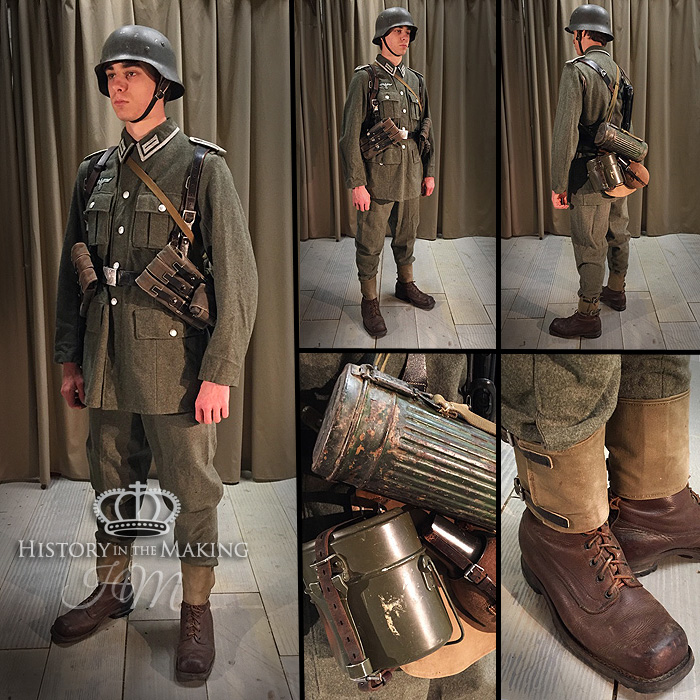
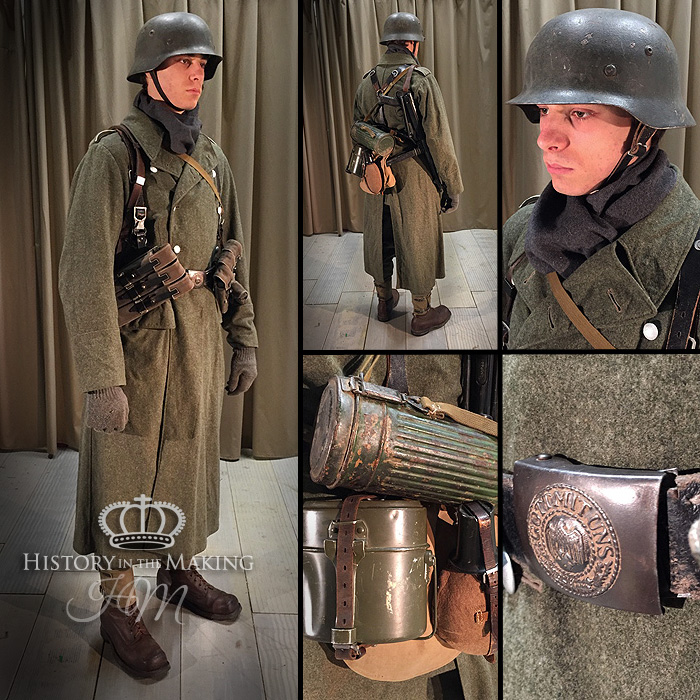









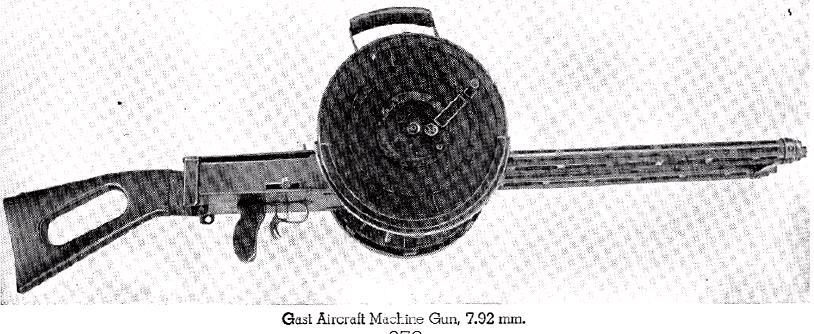








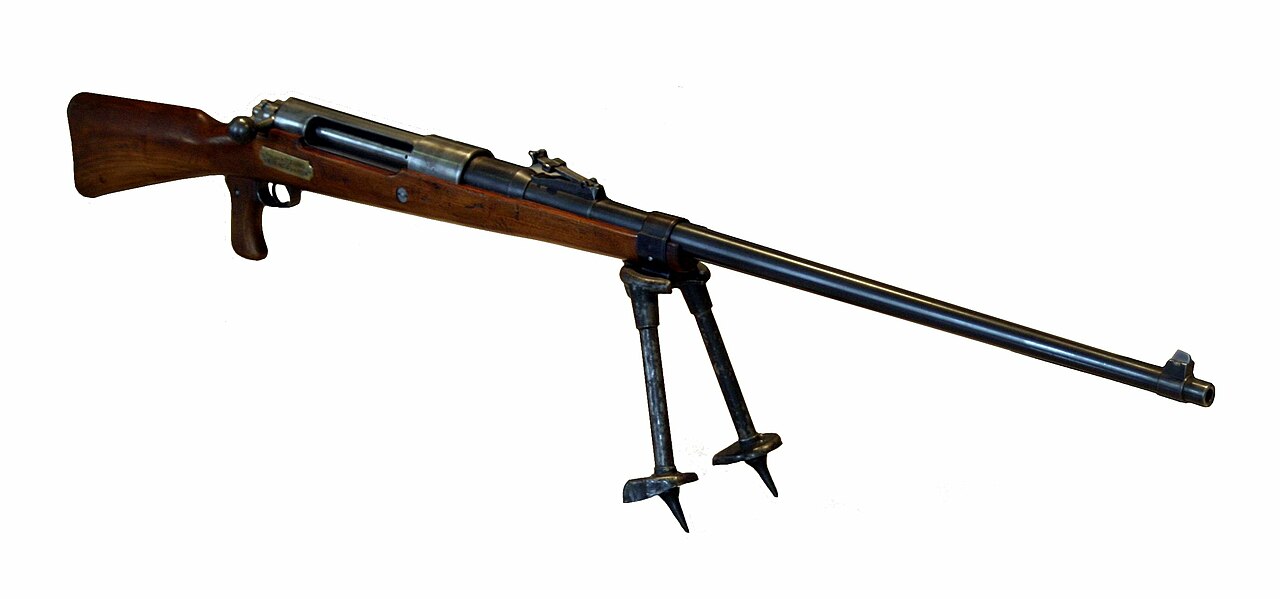
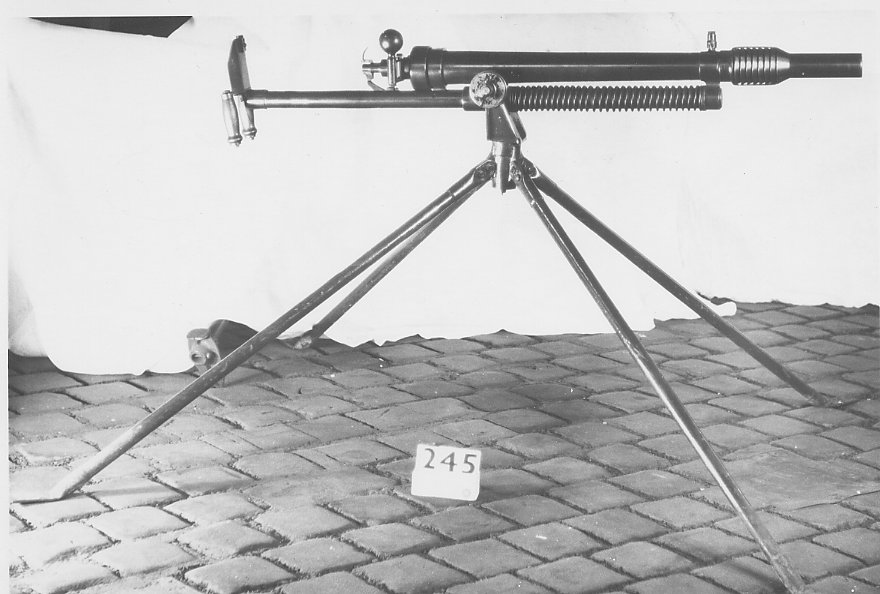
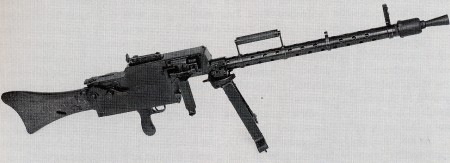




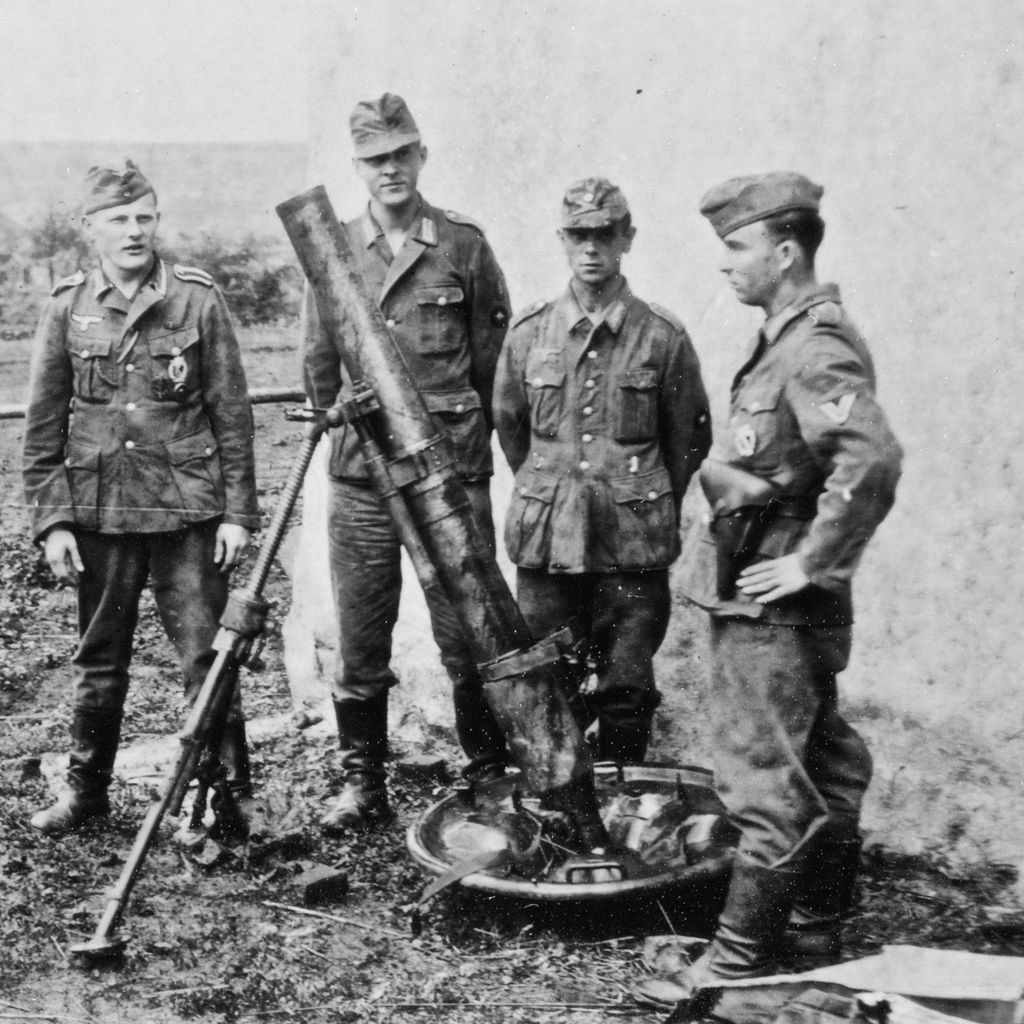
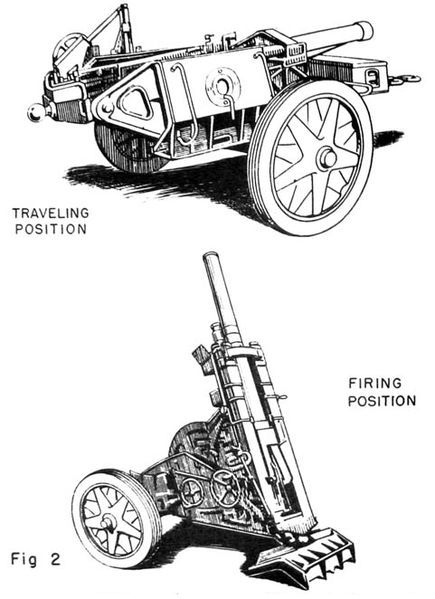
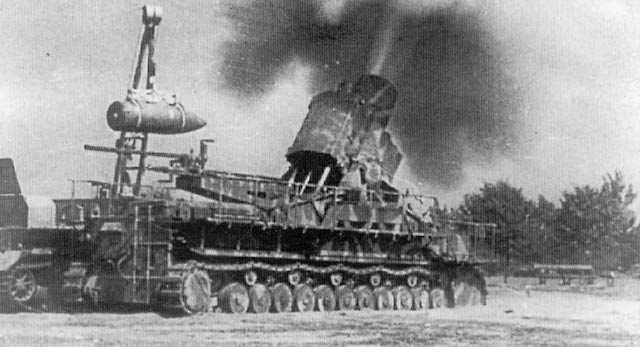



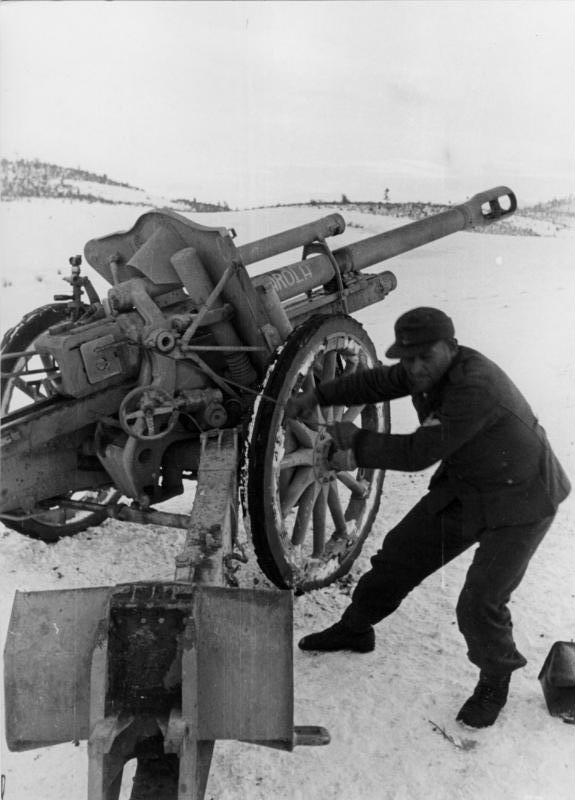


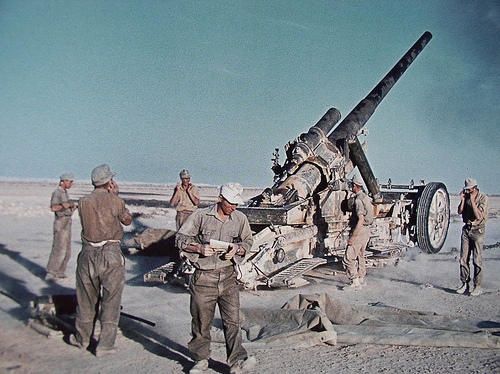
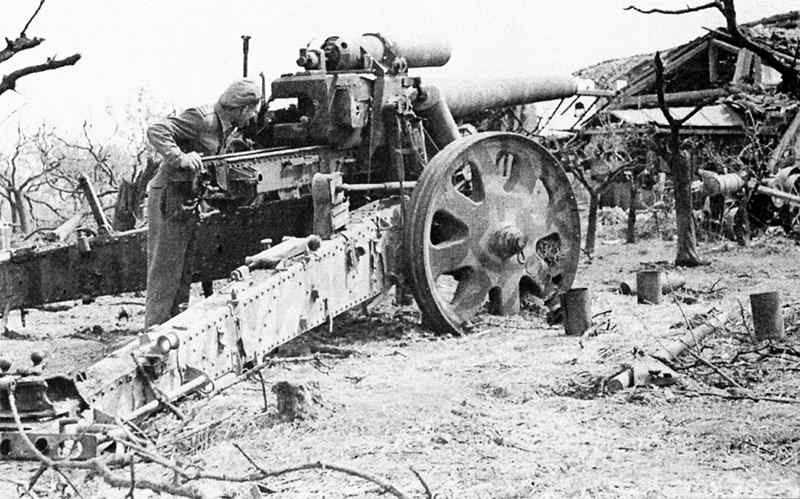




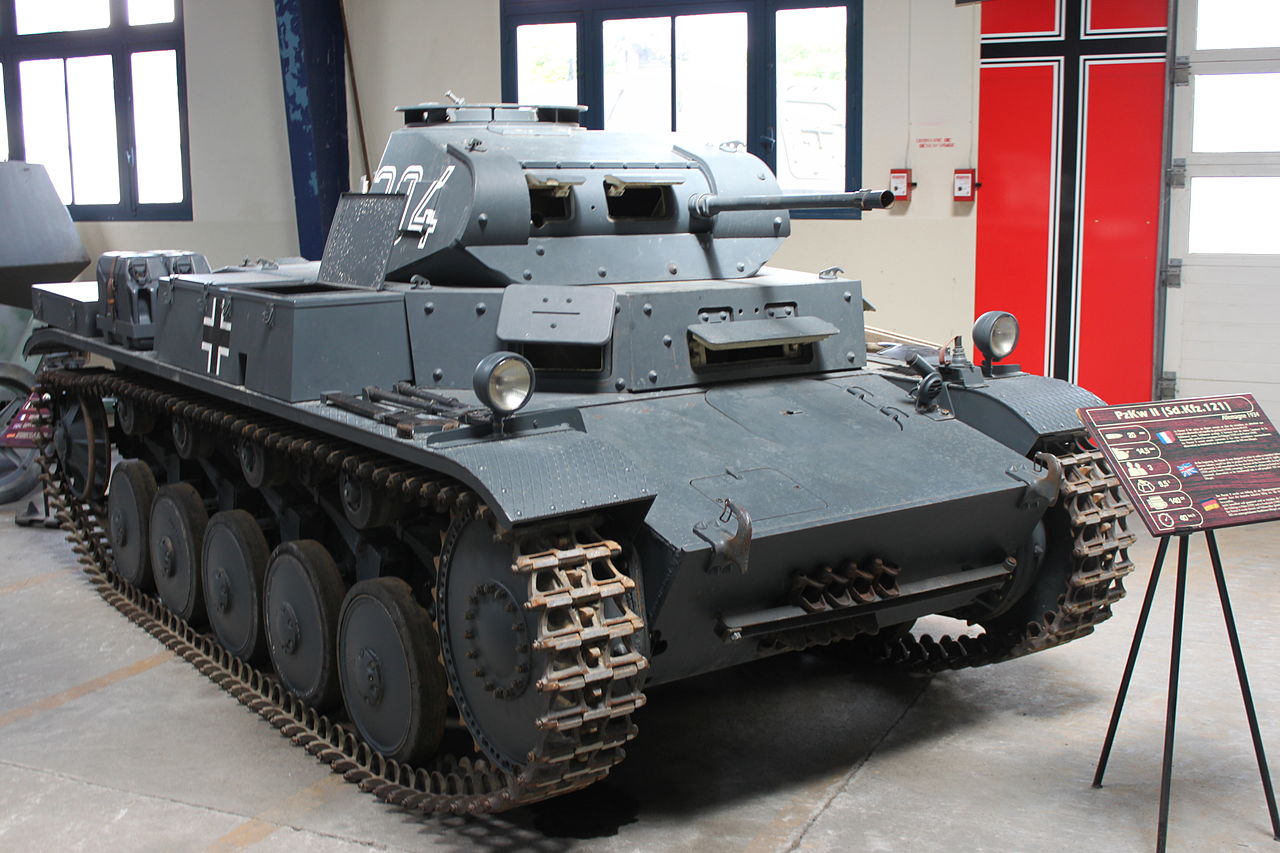




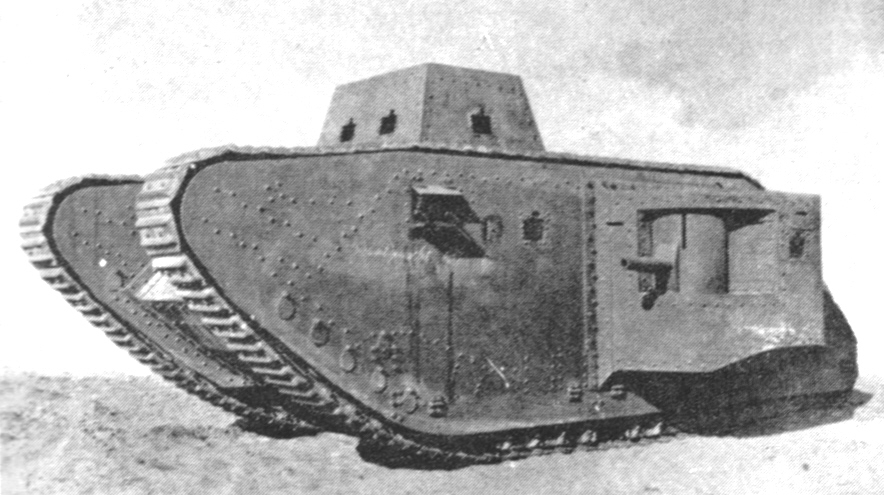








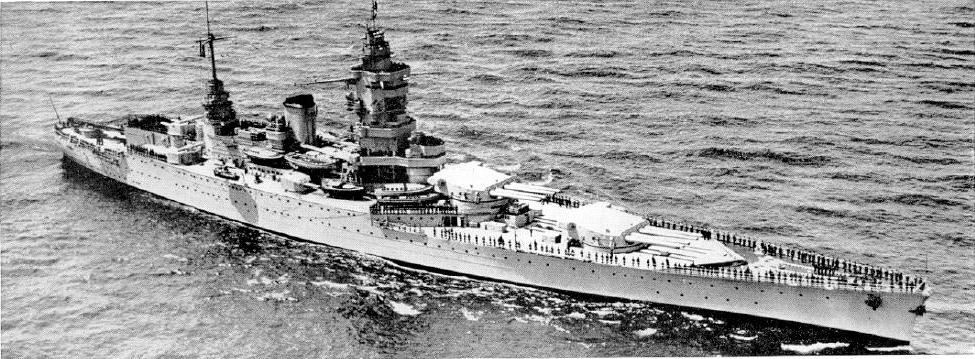
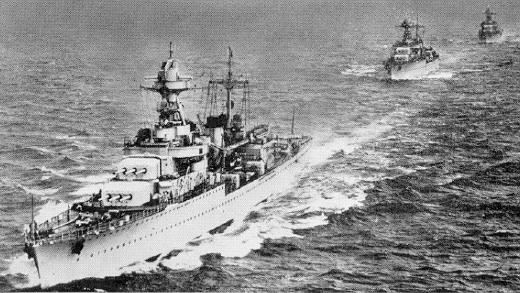







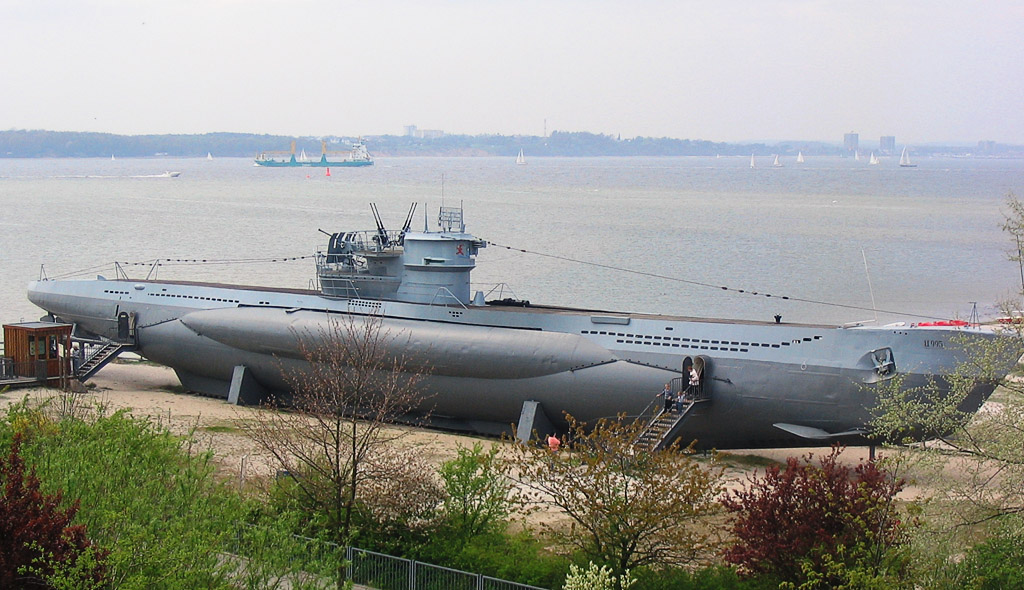





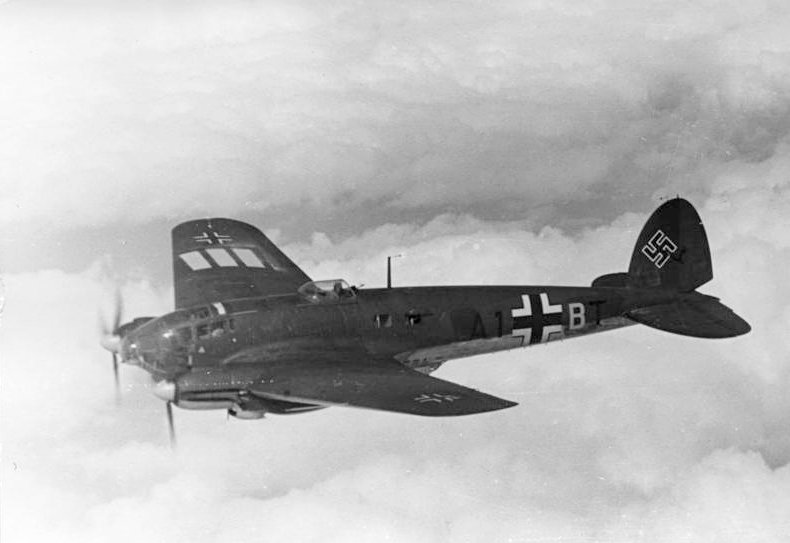

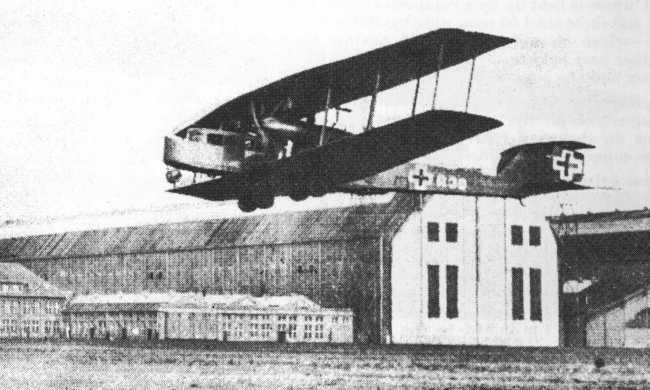



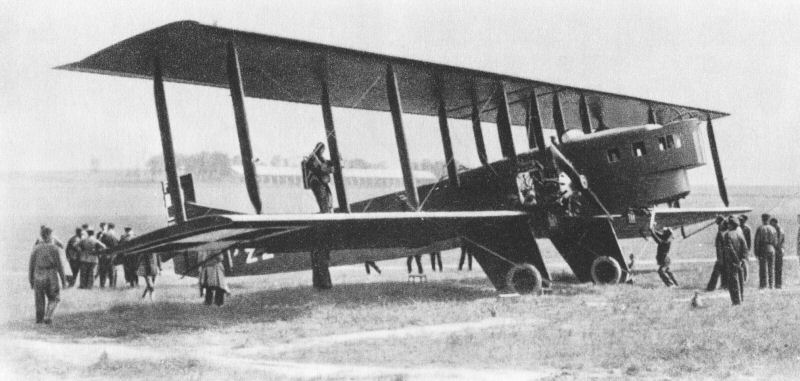
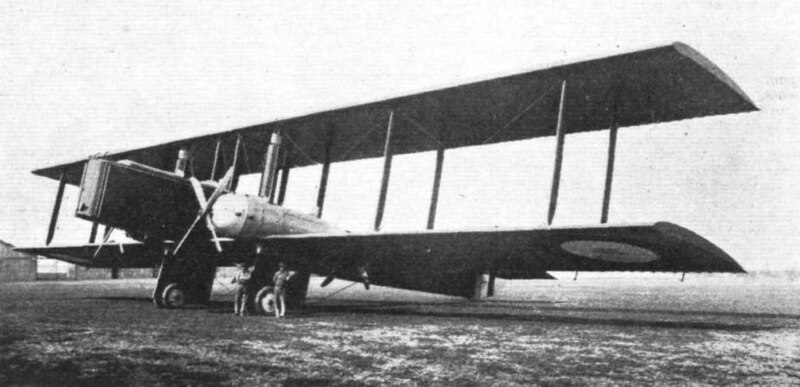


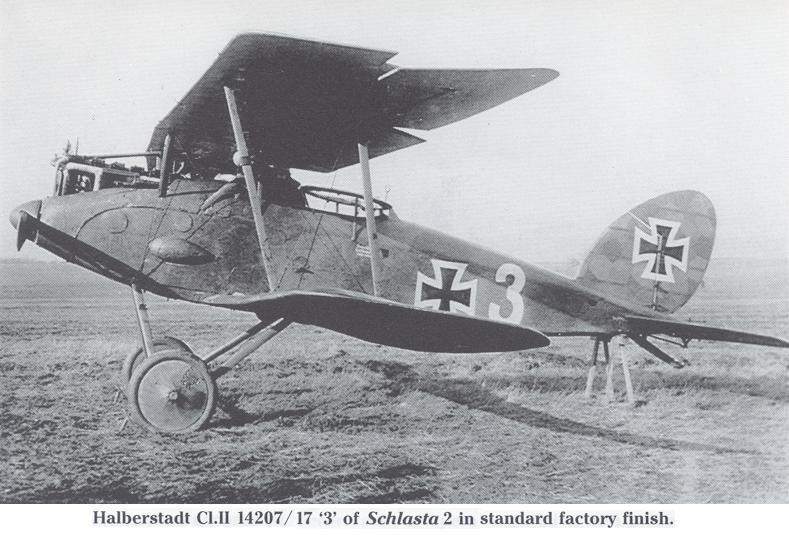



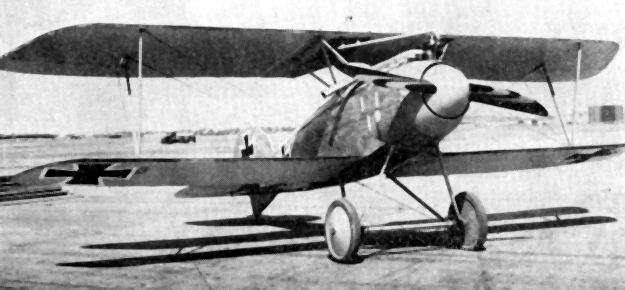
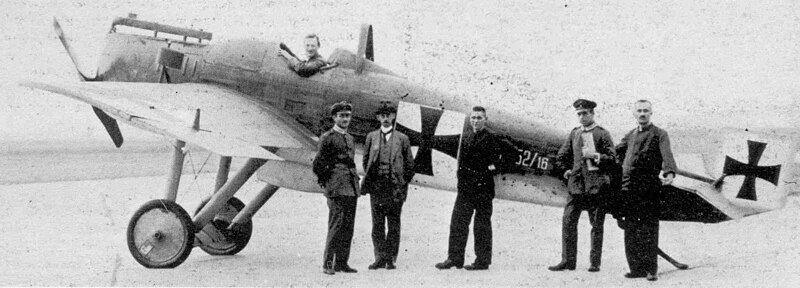


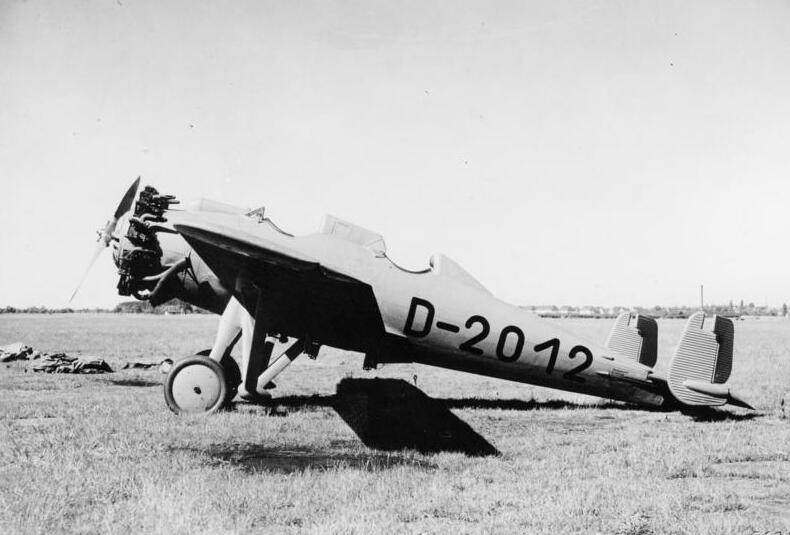
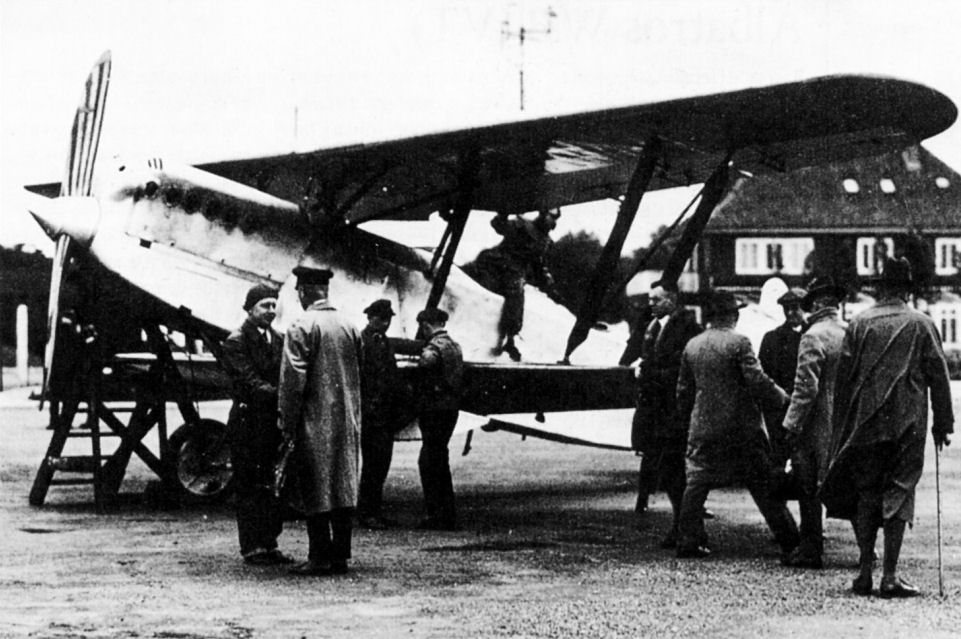



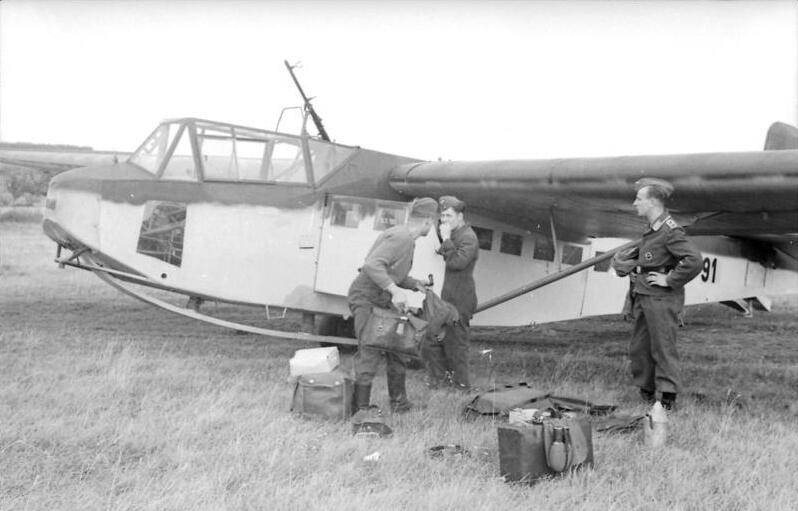
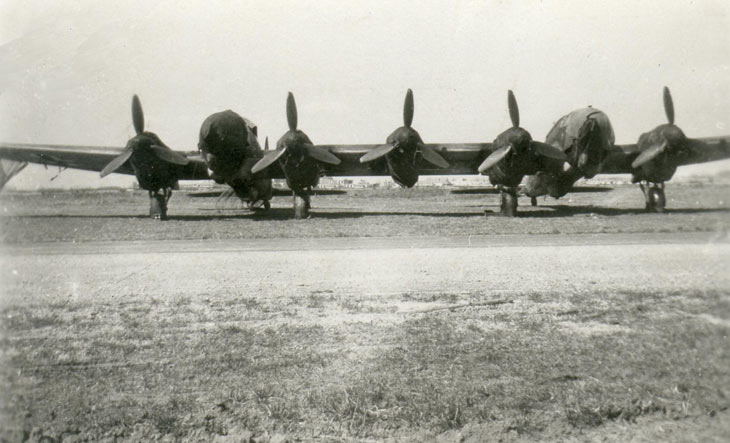


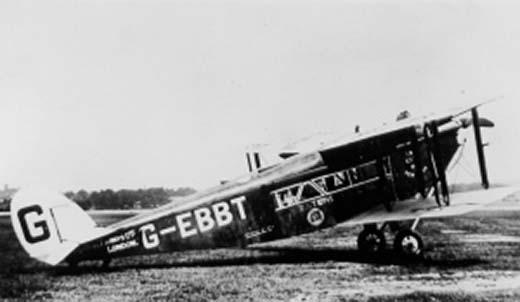

![]() by The Imperial Warglorian Empire » Sat Dec 28, 2019 1:57 am
by The Imperial Warglorian Empire » Sat Dec 28, 2019 1:57 am

![]() by The Imperial Warglorian Empire » Sat Jun 13, 2020 11:55 pm
by The Imperial Warglorian Empire » Sat Jun 13, 2020 11:55 pm

![]() by The Imperial Warglorian Empire » Wed Mar 16, 2022 5:38 pm
by The Imperial Warglorian Empire » Wed Mar 16, 2022 5:38 pm
Advertisement
Return to Portal to the Multiverse
Users browsing this forum: Google [Bot]
Advertisement